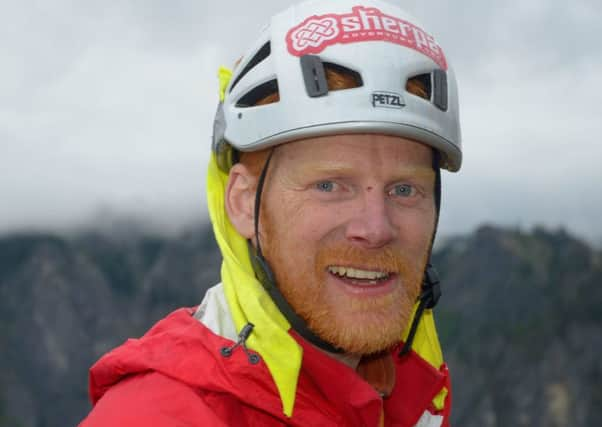Stars of the 2020 Edinburgh Mountain Film Festival show how willpower can overcome almost anything


Another Final Words interviewee I’ll always remember is the climber Kevin Shields. The kinds of technical ascents he tackles – often without ropes – are towards the upper end of what most elite climbers would be comfortable with, and yet Shields suffers from epilepsy and only has one digit on his left hand. When I spoke to him in the autumn of 2009, he had just scaled a smooth, featureless sheet of rock known as Firestone, graded E7, on Hell’s Lum in the Cairngorms. The ascent is described in one guidebook as “devoid of holds and protection” – or, as Shields put it, “it’s just pure balance and friction: there is absolutely nothing to hold at all.” The video of his Firestone climb is still on YouTube; I defy anyone to watch it and not find themselves with sweaty palms by the end.
A new film about Shields promises to be one of the highlights of this year’s Edinburgh Mountain Film Festival, which takes place next weekend. Entitled We Need to Talk About Kev, it catches us up with his climbing career to date, and also some of the fresh challenges he’s had to face, including a life-changing injury and struggles with depression. It also includes a clip of Dave MacLeod, probably the greatest Scottish climber of his generation, holding his head in his hands while discussing Shields’s unbelievable solo (ie un-roped) ascent of an impossible-looking upside-down dry tooling route called Fast and Furious at Birnam Quarry near Dunkeld. Shields was only able to attempt it by using an ice axe with a prosthetic attachment, developed by Glasgow University Prosthetics Department, and if he’d fallen at any point in the upper part of the climb the consequences would have been severe. “Every time I think about it it gives me the shivers,” MacLeod says, shaking his head. “No-one else could do that.”
Advertisement
Hide AdShields isn’t the only athlete in the EMFF programme who has defied seemingly impossible odds. Screening straight after We Need to Talk About Kev is Climbing Blind, which tells the story of Jesse Dufton – a climber from Leicestershire who has Retinitis Pigmentosa, a rare genetic disease which has left him with less than one per cent of his original field of vision. In spite of this, however, Dufton still set out last autumn to become the first blind person ever to make a lead climb of the 449ft Old Man of Hoy sea stack in Orkney – that is, climbing the route first rather than following a partner. All he had to go on were instructions relayed via a headset from his climbing partner Molly Thompson and the feedback he was getting from his fingertips.
Retinitis Pigmentosa really is rare, affecting only one person in every three-to-four thousand in Europe, yet Dufton isn’t the only sufferer in this year’s EMFF programme. Steve Bate, 42, was born in New Zealand but now lives in Scotland, and he has now lost roughly 90 per cent of his sight to the degenerative condition. However, like Darke he has climbed El Capitan (including a first visually impaired roped solo ascent of the Zodiac route) and, encouraged by Darke, he subsequently took up para-cycling, making Team GB and winning two golds and a bronze at the 2016 Paralympics in Rio. Focus, screening on 16 February, follows Bate as he takes part in the Rovaniemi 150 – a self-supported, 150km fat bike race through the Arctic tundra of Finnish Lapland, where temperatures can drop below -35C, 80 per cent of participants don’t make it to the finish line – oh, and where the low light conditions make things particularly difficult for him.
At one point in the film, lying on his back, utterly exhausted, Bate closes his eyes and says “I’ve just got to enjoy this... enjoy these moments... and I guess look back on them when I can’t do them.”
The Edinburgh Mountain Film Festival runs from 15-16 February, see www.emff.co.uk